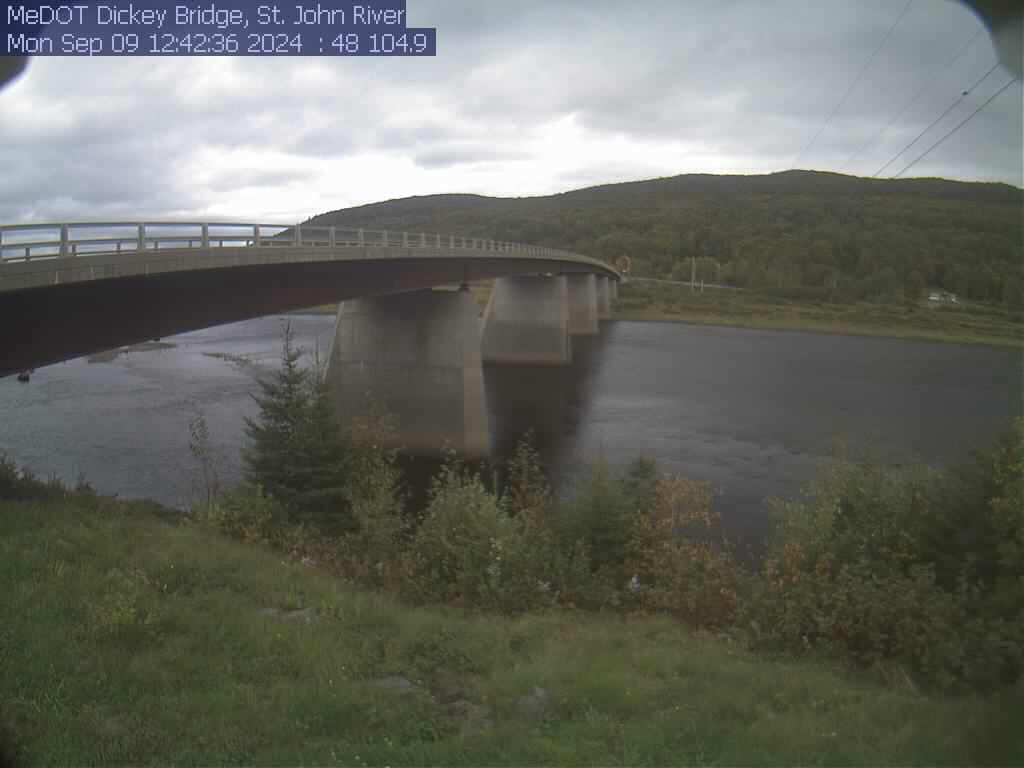Allagash, Maine Weather Cams
Dicky Bridge, St. John River Cam

Allagash, Maine: A Legacy of Wilderness, Industry, and Resilience
Allagash, Maine Weather Cams. Nestled in the remote northern reaches of Aroostook County, Maine, the town of Allagash is a place where history and nature intertwine. Known for its rugged beauty and deep connection to the Allagash River, the town has a rich past shaped by Indigenous peoples, early settlers, and the logging industry.
Indigenous Roots and Early Settlement
The Allagash region has been inhabited for thousands of years. Archaeological evidence suggests that Paleoindians may have traveled through the area as early as 10,000 years ago, following the retreat of the last Ice Age. During the Archaic period (10,000 to 4,000 years ago), Indigenous groups lived a nomadic lifestyle, relying on fishing, hunting, and gathering. The Ceramic Period (3,000 to 500 years ago) saw the introduction of pottery, which allowed for more efficient cooking methods.
By the early 1800s, Indigenous populations began to move away from the Allagash region, making way for European settlers. Among the first recorded settlers were George Moir and Lucinda Diamond, who arrived in 1837 and established what is now known as the Moir Farm. Many of today’s Allagash residents trace their lineage back to these early pioneers.
The Rise of the Logging Industry
The dense forests of northern Maine attracted the attention of industrialists in the 19th century. Around the time Maine became a state in 1820, businessman David Pingree of Salem, Massachusetts, recognized the potential of the region’s timber resources. Logging operations soon became the backbone of the local economy, with workers harvesting vast quantities of spruce and fir trees.
The Allagash River played a crucial role in transporting logs downstream to mills. Log drives, where timber was floated downriver, were a common sight throughout the 19th and early 20th centuries. The industry brought prosperity but also environmental challenges, leading to conservation efforts in later years.
Incorporation and Community Development
Allagash was officially incorporated as a town on January 31, 1966. Despite its small population—237 residents as of the 2020 census—the town has maintained a strong sense of community. The local economy has shifted from logging to tourism, with visitors drawn to the pristine wilderness of the Allagash Wilderness Waterway.
The town’s geography is notable for its vast land area, covering 131.42 square miles, making it one of the largest towns in Maine by land size. Its climate is characterized by cold winters and warm summers, typical of the humid continental climate zone.
Modern-Day Allagash
Today, Allagash remains a gateway to outdoor adventure. Canoeing, fishing, and hunting are popular activities, and the town serves as a hub for those exploring the North Maine Woods. Despite population decline over the decades, Allagash continues to preserve its heritage and natural beauty.
The town’s resilience is evident in its ability to adapt to changing economic conditions while maintaining its deep-rooted traditions. Whether through its historical ties to Indigenous peoples, its logging legacy, or its modern role as a wilderness destination, Allagash stands as a testament to the enduring spirit of northern Maine.
For more information, visit the Allagash, Maine official website.
